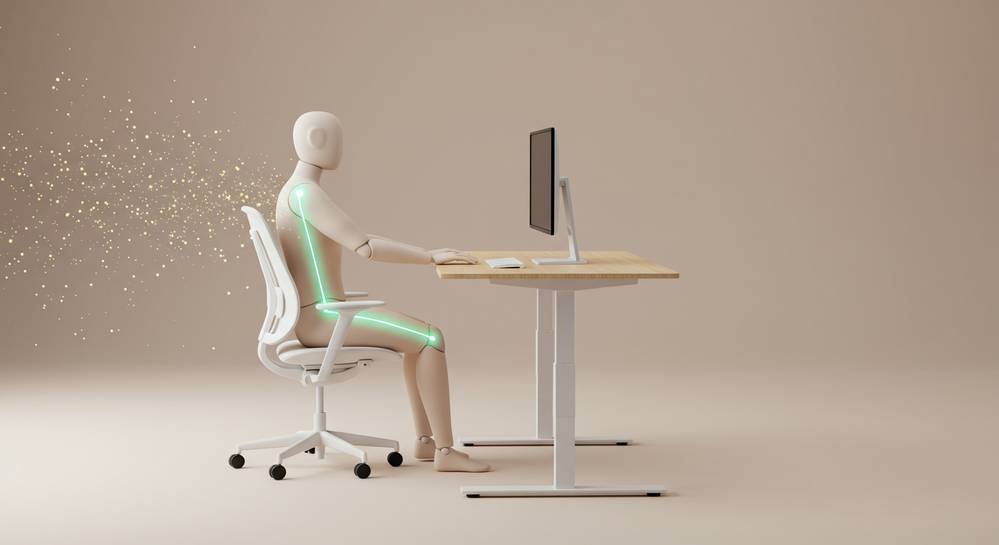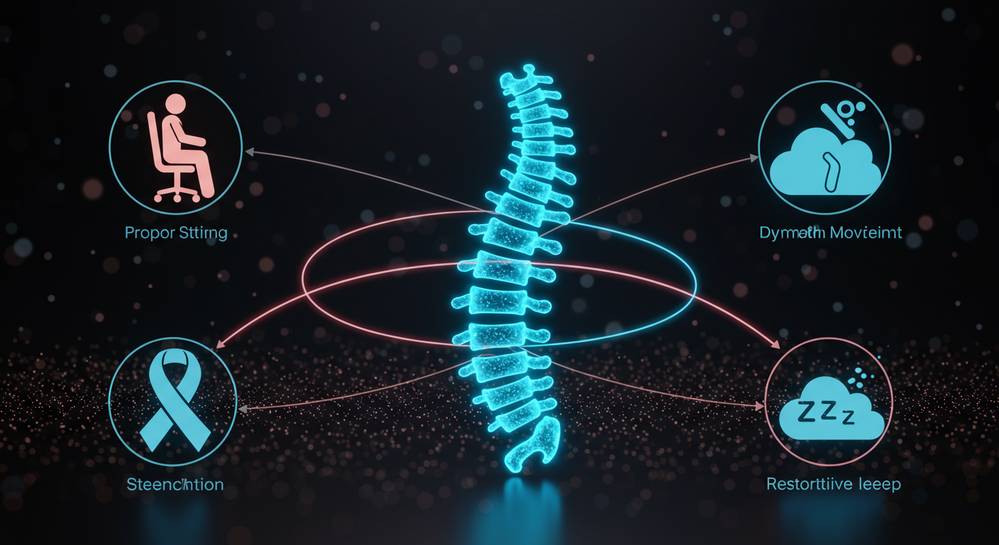Expert advice for improving posture and relieving pain
In our modern world of desk jobs and smartphones, maintaining good posture can be a constant challenge. Slouching over a keyboard or screen often leads to back pain, stiffness, and long-term spinal issues. Fortunately, you can take control and make lasting improvements. This guide provides expert advice for improving posture, offering actionable strategies to help you stand taller, feel better, and boost your overall health.
Why good posture is more than just standing straight

Expert advice for daily posture correction
Lasting posture correction is built on consistent, mindful habits. While exercises are crucial, the expert advice for improving posture often starts with small changes in your daily routine. By becoming aware of how you sit, stand, and move, you can retrain your body for better alignment. This approach prevents strain before it begins, making good posture feel natural rather than forced. It transforms posture from a conscious effort into an unconscious state of balance.
- Optimize your ergonomics. Your workspace is a key battleground for posture. Position your monitor at eye level to keep your neck neutral. Your chair should support your lower back’s natural curve, with your feet flat on the floor. This simple ergonomic setup reduces daily strain significantly.
- Counteract tech neck. The constant downward gaze at phones and tablets is a primary cause of poor posture today. Make a conscious effort to lift your device to eye level. Set reminders to take screen breaks, roll your shoulders back, and gently stretch your neck.
- Embrace dynamic sitting. Static positions are detrimental to your spine. Instead of remaining rigid, shift your position frequently. Stand up every 30 minutes to walk or stretch. This practice boosts circulation and prevents the muscle fatigue that leads to slouching.
Essential exercises to build a stronger foundation
Strengthening the muscles that support your spine is fundamental to improving posture. Your core, back, and glutes form a natural corset, holding your body in proper alignment. Without their strength, you are fighting a losing battle against gravity. Integrating targeted exercises provides the stability needed for long-term change. This is practical expert advice for improving posture beyond just standing tall, and it can be supported by simple meal prep ideas for healthy eating to fuel your muscles.
Key exercises for postural support
- The Plank: A cornerstone for core stability. Lie face down, propped on your forearms and toes. Keep your body in a rigid line from head to heels. This engages the transverse abdominis, a key muscle for spinal support.
- Bird-Dog: This exercise improves balance and coordination. On all fours, extend your right arm forward and left leg back. Maintain a flat back to strengthen the muscles that run along the spine.
- Glute Bridges: Lie on your back with knees bent. Squeeze your glutes to lift your hips. This move counteracts the effects of prolonged sitting by activating weak gluteal muscles, which are crucial for pelvic stability.
Optimizing your environment with ergonomic principles

Your daily environment actively shapes your posture. A poorly designed workspace can force you into positions that cause chronic strain and pain over time. Applying ergonomic principles is some of the most effective expert advice for improving posture because it removes these physical obstacles. This proactive approach supports your body’s natural alignment effortlessly throughout the day. It is a cornerstone of our holistic health philosophy.
Creating a posture-friendly workspace
- Align your monitor to eye level. The top of your screen should be at or just below your line of sight. This simple fix prevents the forward head tilt that leads to tech neck and upper back pain.
- Position your chair for support. Your feet should rest flat on the floor with your knees at a 90-degree angle. Ensure the chair provides firm lumbar support to maintain your spine’s natural S-curve.
- Keep your keyboard and mouse close. This allows your arms to relax with elbows near your body. Reaching forward strains the shoulders and encourages you to hunch.
- Consider a standing desk. Alternating between sitting and standing is ideal. It prevents muscle fatigue and stiffness associated with static positions, promoting better overall alignment.
Daily habits that support a healthy spine

Good posture extends beyond exercises and ergonomics. It is a continuous practice woven into your daily life. The most crucial expert advice for improving posture involves cultivating mindfulness in every movement you make. These small, consistent habits are what truly reinforce a healthy spine from the moment you wake until you go to sleep, making proper alignment an automatic part of your routine.
Mindful habits for lasting alignment
- Take regular movement breaks. Avoid static positions by standing, stretching, or walking for a few minutes every hour. This prevents the muscle fatigue and stiffness that inevitably lead to slouching.
- Elevate your screens. Whether using a phone or tablet, make a conscious effort to hold your device at eye level. This simple change eliminates the downward head tilt that strains your neck and upper back.
- Choose supportive footwear. Your feet are your body’s foundation. Shoes without proper support can misalign your entire kinetic chain, affecting your knees, hips, and ultimately your spine.
- Optimize your sleeping position. Sleeping on your back or side supports the natural curves of your spine. Use pillows to maintain alignment in your neck and between your knees if you are a side sleeper.
Achieving better posture is a marathon, not a sprint. It requires a conscious combination of strengthening key muscles, creating an ergonomic environment, and adopting mindful daily habits. By implementing these expert strategies, you can reduce pain, increase energy, and improve your overall quality of life. For more personalized health insights and guidance, continue exploring the resources available at Health Horizon Line.


0 Comment